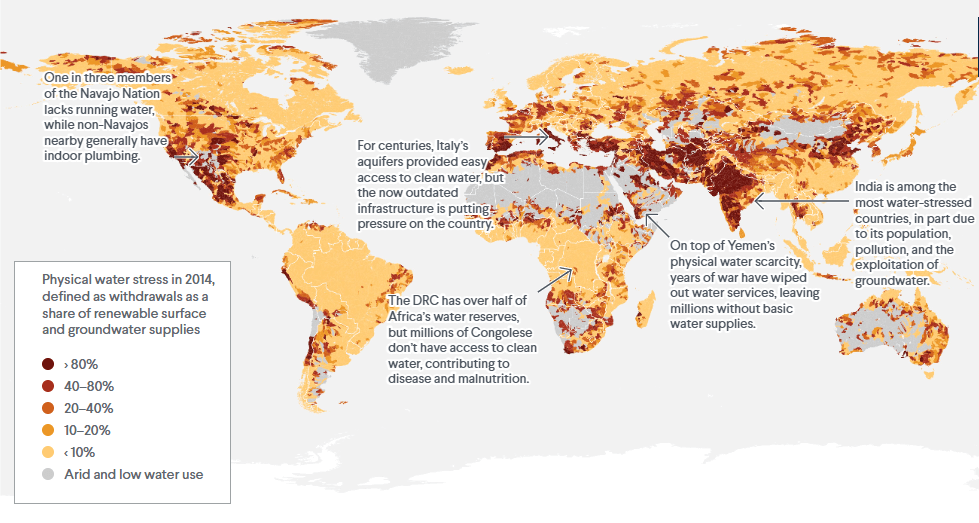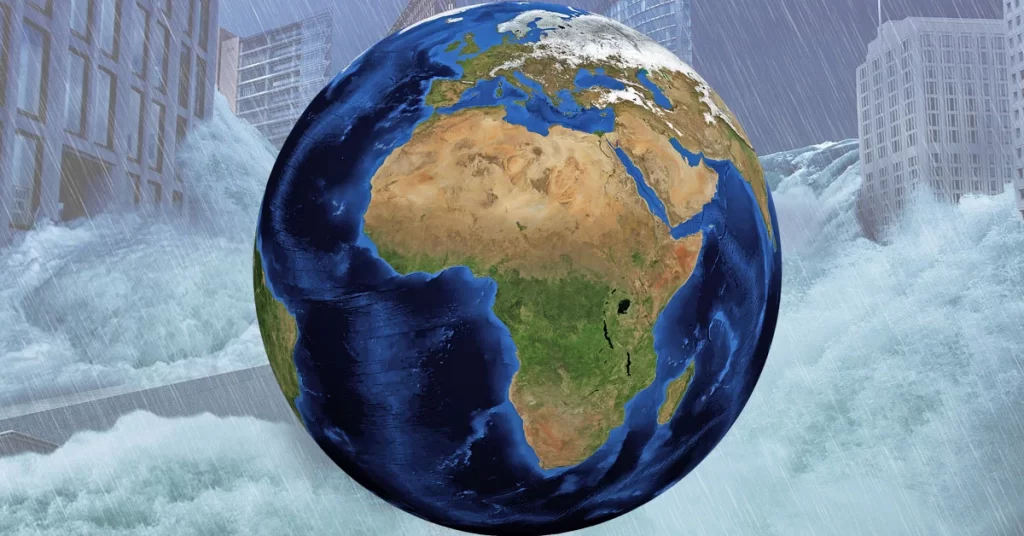According to statistics, billions of people around the world lack supply to life’s essential element, water. About 2.3 billion people live in water-stressed regions, 733 million of which live in critically stressed regions. Water scarcity is likely to occur when communities cannot fulfill their water needs either due to insufficient supply of water or inadequate infrastructure. Water availability depends on a myriad of factors including governance, infrastructure, and population.
Water stress is a global challenge. In spite of due cooperation of governments and aid groups, the problem of water scarcity is projected to get worse due to the underlying problem of overpopulation and global warming. Water stress dramatically differs from one place to another and is capable of causing wide reaching damage. Hence, countries are facing mounting pressures to implement sustainable practices for the improvement of international cooperation on water management.

Water Scarcity
Water scarcity can be divided in two major categories namely physical scarcity and economic scarcity. Physical scarcity is the shortage that occurs due to ecological conditions of a region. Whereas, economic scarcity occurs due to inadequate water infrastructure. Both of these types frequently intermingle to cause water stress. For example, an area can have both lack of rainfall as well as poor sanitation and water storage facilities. According to experts, human factors also play a central role in the water problem. A critical example is the war in Ukraine in 2022 that damaged essential water infrastructure leaving about six billion people with least or no access to safe water supply.
Water infrastructure plays a crucial role in the water problem. If a country has the political and financial wherewithal to put in water infrastructure, it can still provide access to clean and safe water despite the physical water scarcity in a region. Southwestern USA and Oman are great examples of thriving nations despite facing physical water scarcity.
Climate Change and Water Stress
UN experts project 20% drop in renewable water resources with every 1°C (1.8°F) increase in global average temperature. Global warming is expected to increase water stressed areas around the globe and also further deteriorate water scarcity in already suffering regions. According to scientists, weather in tropical and subtropical regions will become much more variable with longer droughts and intense rainfall in the coming years. Agricultural activities are likely to suffer due to unpredictable rainfall and rising temperatures. Due to this, communities can also face food security issues including acute and chronic hunger. Erratic climate is expected to bring more floods that can destroy vital crop and overwhelm storage systems. In addition to this sediments sept up due to rainfall runoff can further contaminate water sources and clog treatment plants.
Role of International Organizations and Governments
One of the UN Sustainable Development Goals (SDGs) is the sustainable management and availability of safe and clean water for all. This fifteen year development agenda has been adopted by member countries in 2015. Governments and partner organizations have made considerable progress between the years 2000 and 2017 with respect to increasing water services. Access to safe drinking water and safely managed sanitation services has increased to 10% and 17% respectively. Some governments have also adopted creative steps in order to improve their water security in the coming years. These include:
Wastewater Recycling:
More cities around the world are recycling their sewage wastewater into drinking water. One such example is the desert capital of Namibia which has been recycling its municipal wastewater into drinking water for over a decade.
Green infrastructure:
This approach involves plants, soil, and other natural systems for the management of storm water. Water utilities in Peru are mandated to reinvest a part of their profit in green infrastructure. Vietnam is also taking similar actions of integrating natural and traditional built water infrastructure.
Smart agriculture/ incorporation of Artificial Intelligence:
China has been leading the way in bioengineering of crops in order to make them more resilient and productive.
World Water Day (WWD)
World Water day is held on 22nd of March ever since the year 1993 to celebrate the importance of water and raise awareness of the 2 billion people living without access to safe and clean water and sanitation services. Water is the driving force behind every aspect of life. It save lives by alleviating poverty, reduces the outbreak of diseases and improves economic growth. Water has to be treated as a scarce resource. There is a crucial need for integrated water resource management in order to balance the needs of communities and economy especially in the time of water scarcity.
World Water Day : A day to celebrate the essence of life, reflect on global water challenges, and unite in the pursuit of sustainable water management for a healthier and more resilient future. World Water Day: An annual observance to raise awareness about the importance of freshwater, promote sustainable water management, and advocate for access to clean water for all.
Water care striving and contributing, water conservation and reuse. Our focus is water positive (+ ) and carbon Negative ( – ). Our ongoing projects are to treat industrial waste and reuse in agriculture with no sludge and minimal energy

